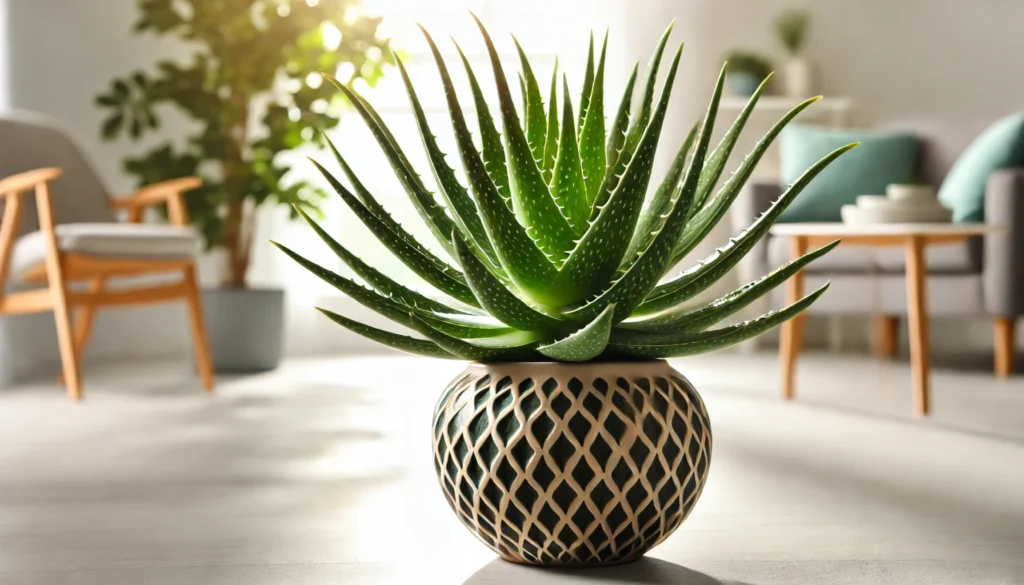
The Bird’s Nest Fern, known scientifically as Asplenium nidus, is a stunning and unique houseplant admired for its bright green, wavy fronds that radiate from a central rosette, resembling a bird’s nest. This plant is an excellent choice for adding a touch of tropical elegance to any indoor space. Typically, Bird’s Nest Ferns can grow up to 2-3 feet tall and wide, making them a substantial yet manageable houseplant.
A Rich History and Ideal Growing Conditions
Native to the tropical regions of Southeast Asia, Australia, and Hawaii, the Bird’s Nest Fern thrives in warm, humid environments. It has been a popular houseplant for many years due to its attractive appearance and relatively easy care. Bird’s Nest Ferns grow best in environments that mimic their natural habitat, including high humidity, indirect light, and well-draining soil.
Bird’s Nest Fern and Pets: Important Information
One of the many benefits of the Bird’s Nest Fern is that it is non-toxic to pets. You can enjoy its lush greenery without worrying about the safety of your cats or dogs, making it an excellent choice for pet owners.
Best Practices for Caring for Your Bird’s Nest Fern
Caring for a Bird’s Nest Fern is relatively straightforward, making it perfect for both novice and experienced plant enthusiasts.
Watering and Humidity
Bird’s Nest Ferns prefer consistently moist soil but do not like to sit in water. Water them thoroughly when the top inch of soil feels dry, and ensure that excess water drains out of the pot to prevent root rot. In general, watering once a week is sufficient, but you may need to adjust based on your specific environment. These plants thrive in high humidity levels. If your home is dry, consider using a humidifier or misting the leaves regularly to increase humidity around the plant.
Soil, Light, and Temperature
A well-draining, peat-based potting mix is essential for Bird’s Nest Ferns. They grow best in bright, indirect light but can tolerate lower light conditions. Avoid direct sunlight, which can scorch the delicate fronds. Bird’s Nest Ferns prefer temperatures between 60°F and 80°F and should be kept away from cold drafts and sudden temperature changes.
Common Problems and Remedies
Even with the best care, Bird’s Nest Ferns can encounter some common issues. Yellowing or browning fronds can be a sign of overwatering or poor drainage. To remedy this, ensure the soil is well-draining and adjust your watering schedule accordingly. Brown leaf tips can be caused by dry air or inconsistent watering. Increasing humidity around the plant and maintaining a regular watering schedule can help prevent this issue.
Bird’s Nest Ferns can also be affected by pests such as spider mites and scale. To combat these pests, use a water and mild soap solution or neem oil spray. Regularly inspecting your plant and wiping down the leaves can help prevent pest infestations.
Propagation and Benefits
Propagating Bird’s Nest Ferns can be done through spores, though it is a more complex process than propagating other houseplants. Instead, consider purchasing additional plants if you wish to expand your collection.
Bird’s Nest Ferns are not only beautiful but also beneficial to your indoor environment. They are known for their air-purifying qualities, helping to remove toxins from the air and improve overall indoor air quality.
Final Thoughts
Bird’s Nest Ferns are one of the most elegant and hardy houseplants you can add to your home. Their unique, wavy fronds and adaptability make them a favorite among plant enthusiasts. While they do require some attention to thrive, the rewards are well worth the effort. With the right care, your Bird’s Nest Fern can become a stunning focal point in your home. So why not add a Bird’s Nest Fern to your collection and enjoy the beauty and benefits it brings?



